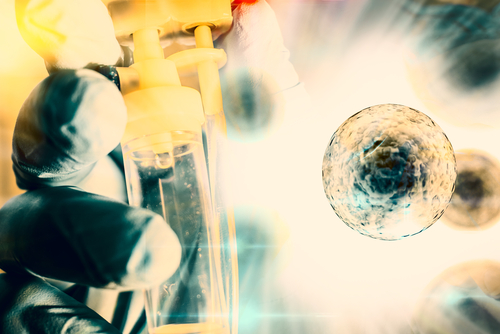Researchers Find Faster, Better Approach to Harvesting Stem Cells for Bone Marrow Transplants, Mouse Study Suggests

A single injection of a new drug combination leads to faster and more effective harvesting of blood stem cells from bone marrow donors, a new mouse study shows.
The method, developed by Indiana University School of Medicine scientists, could make the donation process easier for patients, increasing the amount of donations for bone marrow transplants.
Transplants could also be more effective, the team found. Stem cells collected with the new approach more effectively reached the recipient’s bone marrow than those obtained using the standard method.
The study, “Rapid Mobilization Reveals a Highly Engraftable Hematopoietic Stem Cell,” was published in the journal Cell.
Bone marrow transplants have been used to treat patients with blood cancers, such as multiple myeloma, for more than 50 years. The approach involves the collection of blood stem cells, which have to be both in sufficient number and of high enough quality for the transplant to be efficient.
The current standard process for harvesting blood stem cells requires twice daily injections of G-CSF for multiple days. G-CSF, or granulocyte colony-stimulating factor, works to promote the mobilization of stem cells from the bone marrow to the blood.
While successful, this is commonly associated with bone pain, nausea, headache, and fatigue, which is disruptive and stressful for the healthy volunteers donating the cells.
In addition, G-CSF leads to poor mobilization rates, “and often those who do achieve sufficient numbers of hematopoietic stem and progenitor cells (HSPCs) require more than one apheresis [stem cell collection] procedure,” the researchers stated.
The team tested Mozobil (AMD3100 or Plerixafor), a CXCR4 antagonist already approved for stem cell collection, used in combination with the signaling molecule GROβ, to see if it could improve the harvesting process for bone marrow transplants. GROβ had already been shown to mobilize bone marrow stem and progenitor cells in both mice and monkeys.
They found that a single injection of GROβ plus Mozobil in mice promoted the release of stem cells into the bloodstream, just as happened with standard G-CSF regimen. But the effect was much faster with the combination, needing only 15 minutes to achieve similar cell numbers as with days of G-CSF injections.
Interestingly, the cells collected after GROβ and Mozobil injection were easier to transplant and to be accepted by the recipient mice, resulting in higher-quality bone marrow transplants.
“This new stem cell collection method is the culmination of 25 years of my work from laboratory bench to bedside, back to bench,” lead author Louis M. Pelus, PhD, a professor of microbiology and immunology at Indiana University School of Medicine, wrote in a blog post. “The new molecule [GROβ] was found to be synergistic for regulating hematopoiesis [blood cell production], but unexpectedly also resulted in mobilization.”
“If we can do the whole blood stem cell donation process with one combination injection, then that makes it a lot easier for the process to happen, and it makes it a lot more enticing for normal donors to donate for a transplant for someone else,” Pelus added in a university news release.
In the future, the team expects to advance the approach into clinical trials to test its safety and efficacy in humans.






